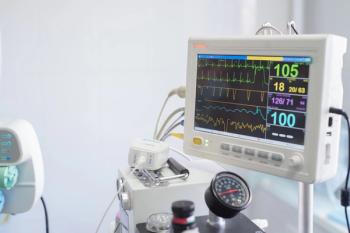
Surgical options for reducing risk in BRCA mutation carriers
Among BRCA mutation carriers, risk-reducing bilateral salpingo-oophorectomy (RRSO) results in an 80% reduction in risk of ovarian cancer and a 50% reduction in risk of breast cancer if the surgery is performed before the onset of menopause.
Dr. Cass is Vice Chair and Associate Clinical Professor, Department of Obstetrics and Gynecology, Cedars-Sinai Medical Center, Los Angeles, California. She is also a member of the Contemporary OB/GYN editorial board.
She has no conflicts of interest to report with respect to the content of this article.
In 2015, more than 21,000 women will be diagnosed with ovarian cancer in the United States, and 14,180 will die from their disease.1 Inherited, or germline, mutations are believed to be responsible for up to 24% of ovarian cancers2 and more women-such as those with BRCA1 and BRCA2 mutations-are being identified as being at high risk. The lifetime risk of ovarian cancer is 20%–46% for BRCA1 mutation carriers and 10%–27% for BRCA2 mutation carriers.3-5
Among BRCA mutation carriers, risk-reducing bilateral salpingo-oophorectomy (RRSO) results in an 80% reduction in risk of ovarian cancer and a 50% reduction in risk of breast cancer if the surgery is performed before the onset of menopause.6-8 Research suggests that the optimal age for RRSO is between 35 and 40; however, cancer risks are affected by BRCA mutation type as well as personal and family history of cancer, and decisions require individualized discussions with each patient. Age at onset of ovarian and tubal cancer is observed to be later in BRCA2 mutation carriers, therefore, some experts contend that it may be acceptable to delay risk-reducing surgery in this population until age 45–50.7,9
This article provides perspective on surgical techniques for RRSO, the role of hysterectomy, postsurgical surveillance, and issues related to interval salpingectomy.
Ovarian cancer can begin in the Fallopian tube
Recently, detailed histologic analysis of the adnexa from BRCA mutation carriers removed at prophylactic surgery has led to one of the most important discoveries about the origin of ovarian cancers. Surprisingly, the majority of occult carcinomas occur in the Fallopian tube rather than the ovary.10-15 Serous tubal intraepithelial carcinoma (STIC), which originates in the fimbriae, is the definitive precursor of the most common and lethal ovarian cancer, high-grade papillary serous cancer.16 The fimbrial location of STIC provides a plausible mechanism for early shedding of cancer cells into the adjacent ovaries and the peritoneum.17,18
Optimal RRSO procedure
The discovery that the Fallopian tube may be the site of origin of many high-grade serous cancers has altered recommendations for RRSO to include removal of as much of the Fallopian tube as possible (Table 1). The tubes should be ligated at the uterine cornua with cautery to optimize destruction of any residual mucosal tubal epithelium.19
Although most cancers have been reported in the distal tube, cases of Fallopian tube cancers or STIC involving isolated mid- or contiguous mid- and distal segments of the Fallopian tube have been reported.20 Pelvic washings should be obtained prior to any dissection. Thorough visual assessment of the peritoneal surfaces, upper abdomen, omentum, and diaphragms is necessary.
Equally important is complete accession by the pathologist of the entire adnexa, using a rigorous protocol. Pathology researchers have advocated a specialized protocol, Sectioning and Extensively Examining the FIMbria (SEE-FIM), which has optimized the detection of occult cancers in the distal Fallopian tube.18 Studies have shown that thorough pathologic evaluation of the adnexa will enhance detection of occult tubal and ovarian cancers from 2.5% to 17%.11,18
Patients must be counseled extensively regarding the possibility of finding an occult cancer at the time of RRSO. Studies of BRCA mutation carriers show that 4%–8% of women will have an occult cancer at the time of prophylactic surgery, which may necessitate additional surgery for complete staging, and in some cases, adjuvant chemotherapy.10-15 When RRSO is performed laparoscopically, a bag should be used for retrieval to optimize specimen integrity and to minimize the risk of spill or subsequent post-site metastases in the event that there is an occult malignancy.
Powell et al have shown that thorough inspection of the peritoneal surfaces with biopsies of any suspicious nodules and pelvic washings are all valuable procedures in detecting ovarian or Fallopian tube cancers. They found no benefit, however, for random peritoneal biopsies or omental sampling because those procedures never resulted in a diagnosis of cancer in the absence of adnexal cancer and can lead to additional surgical morbidity.11
Frozen section analysis of any suspicious nodules or masses within the adnexa is appropriate to guide intraoperative surgical planning if further surgical staging is feasible. The utility of routine frozen section assessment of normal-appearing adnexa has been questioned because it may compromise the integrity of the tissue for final pathology evaluation.21
Should RRSO include concomitant hysterectomy?
Some authors suggest hysterectomy at RRSO to ensure removal of the entire Fallopian tube (Table 2). However, there are no reports of cancers in the uterine cornua of women following RRSO. Removal of the uterus does simplify hormone replacement therapy (HRT) for BRCA mutation carriers by eliminating the need for progestin. Unopposed estrogen can cause uterine cancer and should not be prescribed for a woman with an intact uterus. However, estrogen replacement therapy (ERT), in contrast to combined HRT, has not been associated with breast cancer risk in the general population.22,23 Concomitant hysterectomy and subsequent use of ERT may result in better compliance and less anxiety for a woman than retaining her uterus and using HRT and dealing with the potential for uterine bleeding.
HRT has been shown to significantly improve many of the menopause-related symptoms that compromise quality of life for younger BRCA mutation carriers following RRSO. Available data suggest that HRT does not increase the risk of breast cancer in BRCA mutation carriers when used for the short term or up to age 50.24,25
Young BRCA mutation carriers should be encouraged to consider HRT following RRSO because taking estrogen reduces cardiovascular risk after surgically induced menopause and in the early years following spontaneous menopause.26 In BRCA mutation carriers who have had prophylactic mastectomy, residual risk of breast cancer associated with HRT should be minimal.
The risk of uterine cancer among BRCA mutation carriers is too small to justify routine concomitant hysterectomy at the time of RRSO. One large, prospective study of 4456 BRCA mutation carriers found 17 incident cases of endometrioid uterine adenocarcinoma, which was higher than the 9 cases that would have been expected in the general population.
Ten of the 17 cases were diagnosed in women who had breast cancer, which is known to increase the risk of uterine cancer regardless of BRCA mutation status. Use of tamoxifen resulted in the highest risk of developing uterine cancer: a 10-year absolute risk of 4.3%, although there are no data regarding uterine cancer risk and length of tamoxifen treatment in BRCA mutation carriers.27 Similar findings have been reported for risk of uterine papillary serous cancers in BRCA mutation carriers, although the precise risk of UPSC is unknown.28,29
The additional cost and surgical morbidity of concomitant hysterectomy at the time of RRSO must be balanced with the BRCA mutation carrier’s goals and preferences regarding risk reduction. Overall surgical morbidity approximately doubles with the addition of concomitant hysterectomy and may necessitate a laparotomy.30,31
For women with existing gynecologic pathology such as symptomatic fibroids, history of cervical dysplasia, or adenomyosis, concomitant hysterectomy at the time of RRSO is reasonable. BRCA mutation carriers who have taken or plan to take tamoxifen should also be counseled to consider concomitant hysterectomy. Further study of the incidence of endometrial or cervical pathology in women who keep their uterus after RRSO is necessary to better inform clinical care recommendations.
Outcome of occult neoplasia at RRSO
Pooling results from the largest studies, more than 150 occult cancers of the Fallopian tube or ovary diagnosed at the time of RRSO have been described. More than 70% of these occult cancers were tubal primaries. Occult cancers were more common in BRCA1 mutation carriers and in women older than 50.32,33 In the event that occult cancer is found in the final cytology or pathology report, patients should be referred to a gynecologic oncologist for a thorough discussion of optimal management and the role of additional surgery.
Recent data from 2 large series of women with unexpected adnexal neoplasia highlight some of the challenges and controversies in the management of occult cancers.15,34 Among these asymptomatic women with occult invasive cancers despite normal preoperative screening, 40%–60% of women had stage II or greater disease and recurrence rates were 17%–47% even after treatment with adjuvant chemotherapy.
Women with STIC had a better prognosis, although recurrence/subsequent primary peritoneal carcinoma has been reported in several cases 3–6 years after RRSO. The role of comprehensive staging and adjuvant chemotherapy is less established in women with STIC, although they appear to be beneficial in women with STIC and positive cytology.35
Cancer surveillance post-RRSO
The risk of a subsequent primary peritoneal cancer following RRSO is 1%–4%.6,12 Current practice guidelines for optimal cancer surveillance in BRCA mutation carriers following RRSO are vague and based largely upon expert opinion.
The Society of Gynecologic Oncology and the National Cancer Care Network endorse pelvic exams for ongoing monitoring of menopausal symptoms, consideration of short-term HRT, and related medical issues. (Semi)-annual CA 125 monitoring is recommended; however, the evidence is insufficient to demonstrate that surveillance facilitates earlier detection of subsequent primary peritoneal cancer or provides a survival benefit, given its rare occurrence.36,37
Interval salpingectomy in BRCA mutation carriers
Because the Fallopian tube is believed to be the site of origin of the majority of ovarian serous cancers, interval salpingectomy has been proposed as an attractive risk-reducing surgery to preserve ovarian function and postpone the risks of surgically induced premature menopause in young BRCA mutation carriers.38,39 Small series have shown that the procedure is feasible and does not compromise ovarian function in the short term.40 However, several issues regarding interval salpingectomy remain unresolved with regard to long-term outcomes and its efficacy in reducing cancer risk in BRCA mutation carriers.41
Fifteen percent to 30% of serous ovarian cancers show no evidence of Fallopian tube mucosal involvement, suggesting that the cancer may have originated on the ovarian surface epithelium or from ovarian cortical inclusion cysts. Interval salpingectomy would offer little prospect of risk-reduction against cancers that develop along this pathway.42 A second surgery to remove the ovaries presents additional risks and concern also exists about whether interval salpingectomy might provide BRCA mutation carriers with a false sense of security about their risk of cancer, leading them to significantly delay or reject definitive oophorectomy. Finally, there is no evidence to date demonstrating that interval salpingectomy reduces cancer risk.
Take-home message
Proven benefits of RRSO in premenopausal BRCA mutation carriers against both breast and ovarian cancer must be weighed carefully against the sequelae of surgically induced menopause, including risks of cardiovascular disease, osteoporosis, dementia, and impaired quality of life.
Current models of pelvic serous carcinogenesis suggest that interval salpingectomy is a logical option to reduce cancer risk. The procedure should be discussed with young BRCA mutation carriers, taking into consideration a patient’s individual risks and priorities.39
References
1. Siegel RL, Miler KD, Jemal A. Cancer statistics, 2015. CA Cancer J Clin. 2015;65(1):5–29.
2. Walsh T, et al. Mutations in 12 genes for inherited ovarian, tubal and peritoneal carcinoma identified by parallel sequencing Pro Natl Acad Sci USA. 2011;108(44):18032–18037.
3. Chen S, Parmigianoi G. Meta-analysis of BRCA1 and BRCA2 penetrance. J Clin Oncol. 2007;25(11):1329–1333.
4. Antoniou A, Pharoah PDP, Narid SA, et al. Average risks of breast and ovarian cancer associated with BRCA1 or BRCA2 mutations detected in case series unselected for family history: a combined analysis of 22 studies. Am J Human Genet. 2003;72(5):1117–1130.
5. King MC, Marks JH, Mandell JB. New York Breast Cancer Study Group. Breast and ovarian cancer risks due to inherited mutations in BRCA1 and BRCA2. Science. 2003;302(5645):643–646.
6. Domcheck S, Friebel T, Singer CF, et al. Association of risk-reducing surgery in BRCA1 or BRCA2 mutation carriers with cancer risk and mortality. JAMA. 2010;304:967–975.
7. Finch A, Lubinski J, Moller P, et al. The impact of oophorectomy on cancer incidence and mortality in women with BRCA1 or BRCA2 mutation. J Clin Oncol. 2014;32:1547–1553.
8. Rebbeck TR, Kauff ND, Domchek SM. Meta-analysis of risk reduction estimates with risk-reducing salpingo-oophorectomy in BRCA1 or BRCA2 mutation carriers. JNCI. 2009;101(2):80–87.
9. Hereditary breast and ovarian cancer syndrome. ACOG Technical Bulletin 103. Obstet Gynecol. 2009;113(4):957–966.
10. Leeper K, Garcia R, Swisher E, Greer B, Paley P. Pathologic findings in prophylactic oophorectomy specimens in high-risk women. Gynecol Oncol. 2002;87(1):52–56.
11. Powell, CB, Kenley E, Chen LM, et al. Risk-reducing salpingo-oophorectomy in BRCA mutation carriers: role of serial sectioning in the detection of occult malignancy.J Clin Oncol. 2005; 23(1):127–132.
12. Finch, A, Beiner M, Lubinski J, et al; Hereditary Ovarian Cancer Clinical Study Group. Salpingo-oophorectomy and the risk of ovarian, Fallopian tube, and peritoneal cancers in women with a BRCA1 or BRCA2 Mutation. JAMA. 2006;296(2):185–192.
13. Callahan, MJ, Crum CP, Medeiros F, et al. Primary Fallopian tube malignancies in BRCA-positive women undergoing surgery for ovarian cancer risk reduction. J Clin Oncol. 2007;25: 3985–3990.
14. Powell CB, Chen L, McLennan J, et al. Risk-reducing salpingo-oophorectomy(RRSO) in BRCA mutation carriers: experience with consecutive series of 111 patients using a standardized surgical-pathological protocol. Int J Gynecol Cancer. 2011;21(5):846–851.
15. Conner JR, Meserve E, Pizer E, et al. Outcome of unexpected adnexal neoplasia discovered during risk reduction salpingo-oophorectomy in women with germ-line BRCA1 or BRCA2 mutations. Gynecol Oncol. 2014;133(2):280–286.
16. Crum, CP, Drapkin R, Miron A, et al. The distal Fallopian tube: a new model for pelvic serous carcinogenesis. Curr Opin Obstet Gynecol. 2007;19(1):3–9.
17. Kindelberger DW, Lee Y, Miron A, et al. Intraepithelial carcinoma of the fimbria and pelvic serous carcinoma: evidence for a causal relationship. Am J Surg Path. 2007; 31 (2):161–169.
18. Medeiros F, Muto M, Lee Y, et al. The tubal fimbria is a preferred site of early adenocarcinoma in women with familial ovarian cancer syndrome. Am J Surg Path. 2006;30(2):230–236.
19. Cass I, Walts A, Karlan BY. Does risk-reducing bilateral salpingo-oophorectomy leave behind residual tube? Gynecol Oncol. 2010;117(1):27–31.
20. Cass I, Holschneider C, Datta N, Barbuto D, Walts AE, Karlan BY. BRCA-mutation-associated Fallopian tube carcinoma. Obstet Gynecol. 2010;106(6):1327–1334.
21. Rabban JT, Mackey A, Powell CB, Crawford B, Zaloudek CJ, Chen L. Correlation of macroscopic and microscopic pathology in risk reducing salpingo-oophorectomy: implications for intraoperative specimen evaluation. Gynecol Oncol. 2011;121:466–471.
22. Anderson GL, Limacher M, Assaf AR, et al. Effects of conjugated equine estrogen in postmenopausal women with hysterectomy: the women’s health initiative randomized controlled trial. JAMA. 2004;291:1701–1712.
23. Rossouw JE, Anderson GL, Prentice RL, et al. Risks and benefits of estrogen plus progestin in healthy postmenopausal women: principal results from the women’s health initiative randomized controlled trial. JAMA. 2002;288:321–333.
24. Rebbeck TR, Friebel T, Wagner T, et al. Effect of short term hormone replacement therapy on breast cancer risk reduction after bilateral prophylactic oophorectomy in BRCA1 and BRCA2 mutation carriers: the PROSE study group. J Clin Oncol. 2005;23(31):7804–7810.
25. Eisen A, Lubinski J, Gronwald J, et al. Hormone therapy and the risk of breast cancer in BRCA mutation carriers. JNCI. 2008;100:1361–1367.
26. Rivera CM, Grosshardt BR, Rhodes DJ, et al. Increased cardiovascular mortality after early bilateral oophorectomy. Menopause. 2009;16(1):15–23.
27. Segev Y, Iqbal J, Lubinski J, et al. The incidence of endometrial cancer in women with BRCA1 and BRCA2 mutations; an international prospective cohort study. Gynecol Oncol. 2013;130:127–131.
28. Lavie O, Ben-Arie A, Segev Y, et al. BRCA germline mutations in women with uterine papillary serous carcinoma-still a debate. Int J Gynecol Cancer. 2010;20:1531–1534.
29. Vyarvelska I, Rosen B, Narod SA. Should hysterectomy complement prophylactic salpingo-oophorectomy in BRCA1 and BRCA2 mutation carriers? Gynecol Oncol. 2014;134:219–221.
30. Hainwright PJ, Mioton LM, Thomassee MS, et al. Risk profiles and outcomes of total laparoscopic hysterectomy compared with laparoscopically assisted vaginal hysterectomy. Obstet Gynecol. 2013;121(4):781–787.
31. Manchanda R, Abdelraheim A, Johnson M, et al. Outcome of risk-reducing salpingo-oophorectomy in BRCA carriers and women of unknown mutation status. BJOG. 2011;118:814–824.
32. Lamb JD, Garcia RL, Goff BA, et al. Predictors of occult neoplasia in women undergoing risk-reducing salpingo-oophorectomy. Am J Obstet Gynecol. 2006;194:1702–1709.
33. Viscus D, Shaw PA, Finch A, et al. Risk factors for non-invasive lesions in the Fallopian tube in BRCA mutation carriers. Gynecol Oncol. 2010; 118:295–298.
34. Powell CB, Swisher EM, Cass I, et al. Long term follow up of BRCA1 and BRCA2 mutation carriers with unsuspected neoplasia identified at risk-reducing salpingo-oophorectomy. Gynecol Oncol. 2013;129(2): 364–371.
35. Powell CB. Risk reducing salpingo-oophorectomy for BRCA mutation carriers: Twenty years later. Gynecol Oncol. 2014;133 (2): 261–262.
36. National Comprehensive Cancer Network. NCCN clinical practice guidelines. Oncology: Genetic/familial High-risk Assessment: Breast and Ovarian. Version1. 2010. Fort Washington, PA.
37. Chapman J, Powell CB, McLennan J, et al. Surveillance of survivors: Follow-up after risk-reducing salpingo-oophorectomy in BRCA1/2 mutation carriers. Gynecol Oncol. 2011;122:339–343.
38. Greene MH, Mai PL, Schwartz PE. Does bilateral salpingectomy with ovarian retention warrant consideration as a temporary bridge to risk-reducing bilateral oophorectomy in BRCA1/2 mutation carriers? Am J Obstet Gynecol. 2011;204:19.e1–6.
39. Society of Gynecologic Oncology. SGO Clinical Practice Statement: Salpingectomy for ovarian cancer prevention. https://www.sgo.org/clinical-practice/guidelines/sgo-clinical-practice-statement-salpingectomy-for-ovarian-cancer-prevention/. Accessed February 18, 2015.
40. Morelli M, Venturella R, Mocciaro R, et al. Prophylactic salpingectomy in premenopausal low-risk women for ovarian cancer: primum non nocere. Gynecol Oncol. 2013;129(3):448–451.
41. Kwon JS, Tinker A, Pansegrau G, et al. Prophylactic salpingectomy and delayed oophorectomy as an alternative for BRCA mutation carriers. Obstet Gynecol. 2013;121:14–24.
42. Gilks CB, Miller D. Opportunistic salpingectomy for women at low risk for development of ovarian cancer: the time has come. Gynecol Oncol. 2013;129:443–444.
Newsletter
Get the latest clinical updates, case studies, and expert commentary in obstetric and gynecologic care. Sign up now to stay informed.
















